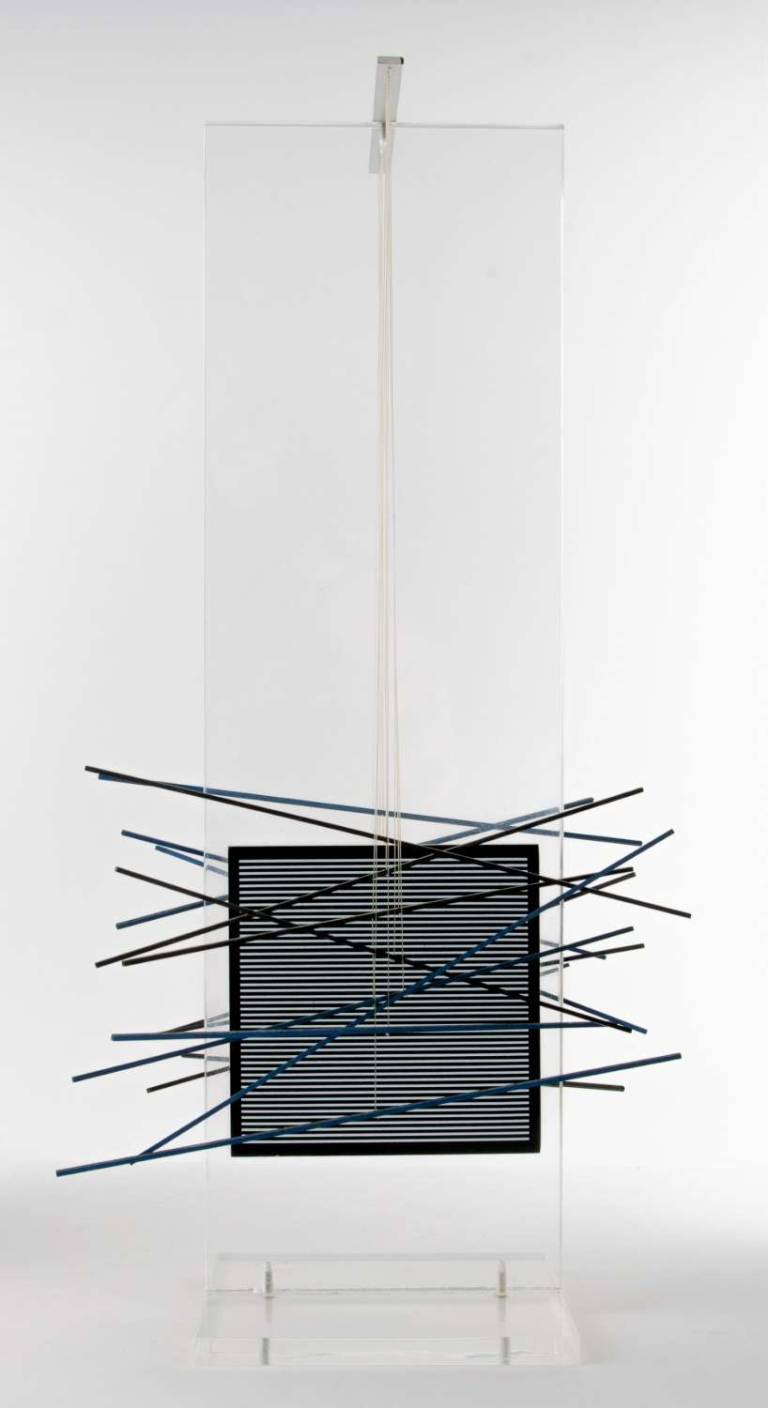Jesús Rafael SotoMultiple III. 1969.
- Sculpture
- Ref: 621139/19634
£ 17,500.00
Multiple sculpture in plexiglass, with screenprint, painted metal and nylon. 1969. Signed (with the incised signature on the Perspex). Numbered from the edition of 300. Issued in the series: Jai- Alai, issued by Marlborough Galleries, New York 1969.
Provenance: Private Collection, USA; purchased c. the date of issue (1969).
Excellent example with the Perspex in unusually clean un-scratched condition. 502 x 250 x 251mm.
The 1969 ‘Jai-Alai’ series of kinetic work by Soto , including ‘Multiple III’ here, marked the first time that his three-dimensional work had been exhibited in the US. His reputation there had been greatly increased by this date by the international opinion and acclaim of the work he had shown at the Denise René gallery in Paris. His constructions in Perspex and metal, with their kinetic movement created by the natural movement of the air, like Calder’s mobiles, established him amongst the leaders of the optical art circle.
Jesús Rafael Soto was born in Ciudad Bolívar in Venezuela and studied at the School of Visual and Applied Arts in Caracas. During this period he became linked to Los Disidentes, a group of artists that included Alejandro Otero and Carlos Cruz-Diez. In addition to his fellow compatriots, Soto’s work was also influenced by the ‘constructional’ element of Kazimir Malevich and Piet Mondrian.
The main artistic ideas in Soto's works are purely abstract, - vibrations, progressions and geometric rigor. They could be seen through the use of lines and superimposed squares in his sculptures, made with paint and a series of industrial and synthetic materials. He moved to Europe in the 1950’s, attracted like others of the South American kinetic abstractionists to the Op Art movement being generated in Paris and especially by Denise René.
From that period onwards he spent most of his life in Europe, becoming a key member of the Group Zero movement, which included such artists as Lucio Fontana, Gunther Uecker and Yves Klein. As a result, Soto's work also incorporates modernist concepts such as light, time, movement, manipulation of form and space. All of these facets place him as a very important figure within the Kinetic and Op Art movements. Multiple III, here, shows these elements in their purest form.
